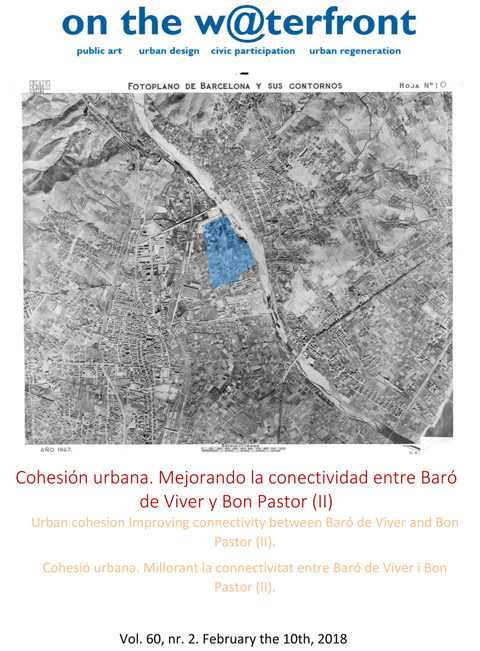Industrial Estate. “sewing the territory”
Keywords:
Polígono Industrial, Bon Pastor, Espacio Público, Mejora Urbana, BarcelonaAbstract
Industrial Estate. “sewing the territory”
This paper explains the process of urban improvement of the Industrial Estate located in Bon Pastor, a neighborhood that is located in the District of Sant Andreu, next to Baró de Viver. To better understand what is the current situation at the urban level we have to go back in time to the year 2004, when for the first time interventions of urban regeneration begin under the Law of Neighborhoods, a law that seeks to improve the quality of life of the inhabitants from Barcelona. These interventions are programmed through comprehensive intervention plans that respond to the local and specific needs of each neighborhood. Due to this, many conflictive areas of Barcelona have been improved, and what is proposed in this dossier, is the urban improvement proposal of the Bon Pastor Industrial Estate, particularly isolated from the territory that surrounds it.
The current situation reflects the need to implement a series of measures to improve the public space; analyzing the problems that define which are the opportunities and potentialities of the territory, for example, how the width of facades of the industries and also of the roads would allow remarkable interventions.
The objective of the project is to “sew the territory”, physically connecting it with the network of public spaces of the adjacent neighborhoods through an integral improvement of the horizontal and vertical planes of the Industrial Estate. Another key point of the proposal is accessibility, taking into account that Design For All has contributed to make Barcelona a city accessible to all, good practices are also taken into account for its application in the area.
The proposed changes are intended to maintain the productive and industrial structure of the polygon by boosting its urban connectivity and transforming it into a bridge between neighborhoods, which aims to renew it with criteria of environmental sustainability where citizen participation is fundamental.
Downloads
Published
How to Cite
Issue
Section
License
The
 licence allows: Share — copy and redistribute the material in any medium or format and Adapt — remix, transform, and build upon the material for any purpose, even commercially.The licensor cannot revoke these freedoms as long as you follow the license terms. Author's rights are protected by the ISSN 1139-7365. On the w@terfront has no restrictions respect the copyright by the authors and does allow authors to retain the publishing rights without restrictions.
licence allows: Share — copy and redistribute the material in any medium or format and Adapt — remix, transform, and build upon the material for any purpose, even commercially.The licensor cannot revoke these freedoms as long as you follow the license terms. Author's rights are protected by the ISSN 1139-7365. On the w@terfront has no restrictions respect the copyright by the authors and does allow authors to retain the publishing rights without restrictions.This journal does not apply any type of charge to the authors for the presentation or processing of the articles.







